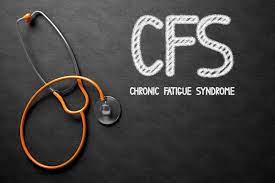17 Aug 2022 Chronic fatigue syndrome and euthanasia

- Recently, a petition has been filed in the Delhi High Court to prevent a person suffering from Chronic Fatigue Syndrome since 2014 from going to Europe for medical assisted euthanasia.
Chronic fatigue syndrome
- It is a serious and debilitating disease that affects the nervous system, the immune system and the body’s energy production system.
- Also known as “myalgic encephalomyelitis”.
- Possible consequences are viral or bacterial infections, hormonal imbalances and genetic defects.
- It can affect anyone from children to adults.
Symptoms:
- Illness causes a significant decrease in the ability to work.
- The condition becomes more severe if this type of fatigue or debilitating illness lasts more than 6 months.
- The most recognizable symptom is post-exercise malaise (PEM).
- Feeling “depleted” in physical/mental energy even after minor activities like simple petty shopping or brushing teeth.
Other symptoms:
- Trouble sleeping, difficulty thinking, memory or concentrating, dizziness/lightheadedness, headache, muscle aches, joint pain, flu-like symptoms, tender lymph nodes, and digestive problems.
Remedy:
- There is no specific type of test available for CFS disease, so it is diagnosed on the basis of symptoms, for this blood and urine tests may also have to be done.
- Doctors have described ways of dealing with disease symptoms such as “pacing” in which patients learn to balance rest and activity to prevent accidents caused by exertion.
Euthanasia:
- Euthanasia is the practice of ending the patient’s life in order to limit the suffering of the patient (the patient in question will usually be mentally ill or experiencing great pain and suffering).
Type:
Active Euthanasia:
- ‘Active euthanasia’ is a situation when a person (patient) seeking euthanasia is assisted in this act, such as injecting poison, etc. It is also sometimes called “invasive” euthanasia.
Passive Euthanasia:
- Willfully allowing the patient to die by stopping artificial life support.
Voluntary Euthanasia:
- With the consent of the patient.
Involuntary euthanasia:
- Without the patient’s consent, for example if the patient is unconscious and his wishes are unknown.
Legal Provisions in India:
- In 1994, the Supreme Court of India in Gyan Kaur v State of Punjab held that both suicide and euthanasia were illegal.
- The ‘right to life’ does not include the right to death. It therefore set aside the decision of a two-judge bench in P. Rathinam v. Union of India which held section 309 (attempt to commit suicide) of the Indian Penal Code as unconstitutional.
- In 2011, in Aruna Ramchandra Shanbaug v Union of India, the Supreme Court held that passive euthanasia can be allowed in exceptional circumstances and under the strict supervision of the apex court.
- In the year 2018, the Supreme Court declared the right to die with dignity as a fundamental right, allowing passive euthanasia in the country.


No Comments